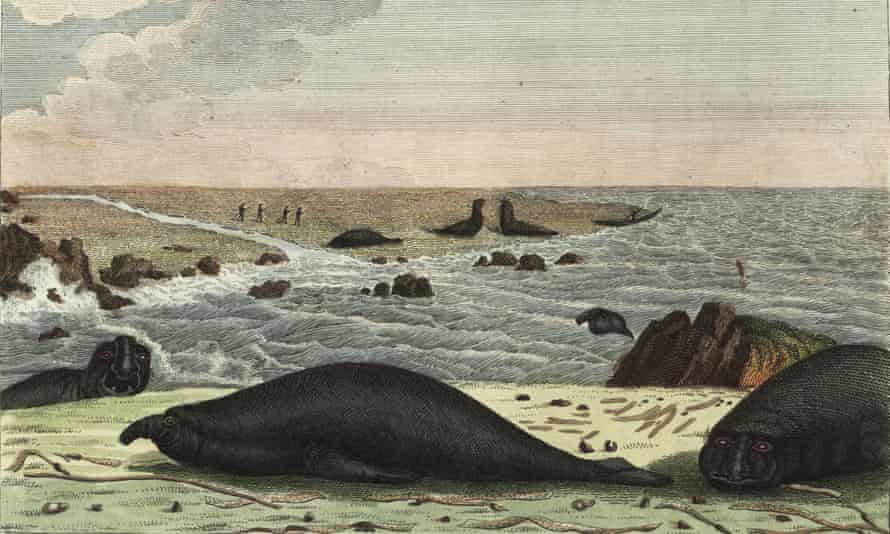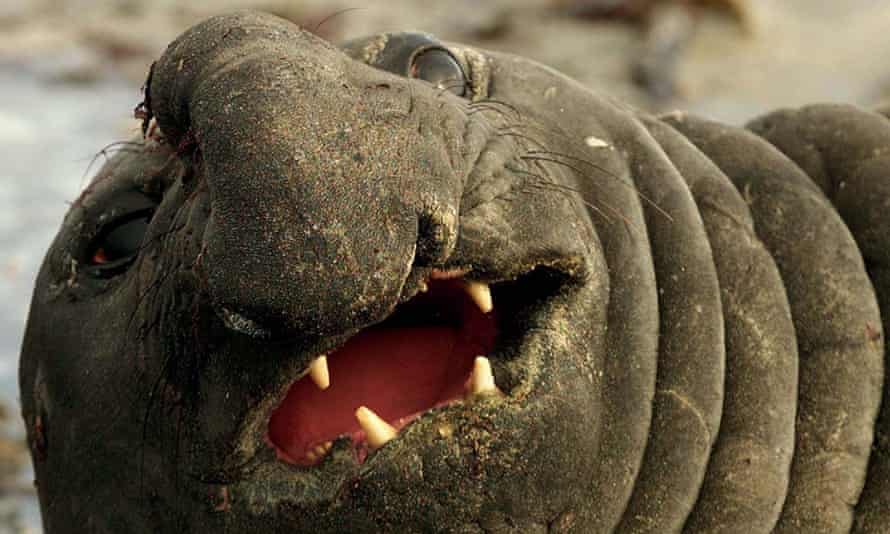An elephant seal: the nose does something no nose should do

It shudders

The writer Jenny Diski is on her way to Antarctica. At Grytviken, an abandoned whaling station on South Georgia, she spots a “grey, jellied mountain”.
“Elephant seal is one of those euphemistic names humans give creatures who remind them of what they don’t want to be reminded of,” she writes. But her fellow travellers want to be reminded: they take pictures. Maybe the elephant seal will get a spot on someone’s wall. It will be the first time in history that a person has chosen to decorate using that face.
It is a face only an elephant seal “supermom” – the small percentage of females who give birth to the majority of a colony’s pups – could love.
The bull must take his nose everywhere: that is the law. When he rests on a secluded beach, the nose rests on the beach, too, reflected in the layer of water caught between grains of sand. The seal lets out a sigh and the nose does something no nose should do: it shudders.
In the 1993 BBC series Life in the Freezer, David Attenborough stands behind a giant “beach master” – the dominant male – narrating over the beast’s throaty snorts. Then suddenly, the animal turns and lurches after Attenborough, who retreats while pointing a stick at it.
The scenes on this beach have haunted me since childhood. A male challenger hauling his giant body over the other seals: a baleful pebble skipping on lumpy water. The endless bellowing; the steam from mouths everywhere; red eyes rolling around as the bulls fight, slamming one 4,000kg body into another.
When they’re not slapping noses, they’re lifting a weary, bloodied face to the sky to roar, mouth slackened into an upside down crescent moon of despair, above which dangles … The Thing.
The collected mentions of the animal included under the entry for elephant seal in the Antarctic Dictionary include this, by Willy (ahem) Ley: “On Kerguelen Island, 2,600 miles below Australia, a bull elephant seal inflates its 15-inch snout in a lusty roar. The trunk usually hangs limp.”
In 1999, a Falklands elephant seal (pictured below) growled at Prince Charles. The seals look like they hold a grudge. Most of them look like their name might actually be “Grudge”.

Maybe it would be soothing to think of the elephant seals underwater, suddenly graceful. But even there, they are heavy – and therefore good at sinking. Their blood is filled with carbon monoxide, which slows oxygen delivery, helping them to dive up to 1.7km into the darkness. At last, nobody can see the nose. It floats, just a little, and the seal’s mood lifts. With that nose, that fearsome nose, he blows bubbles.